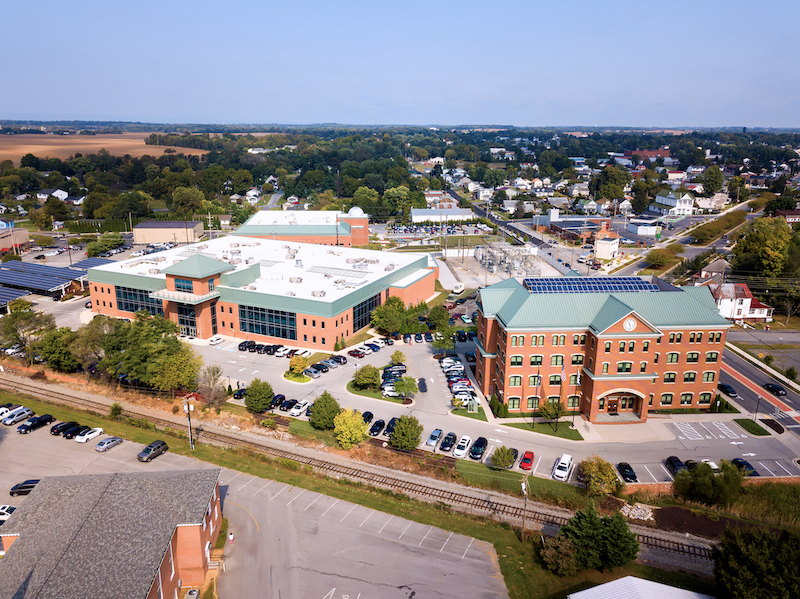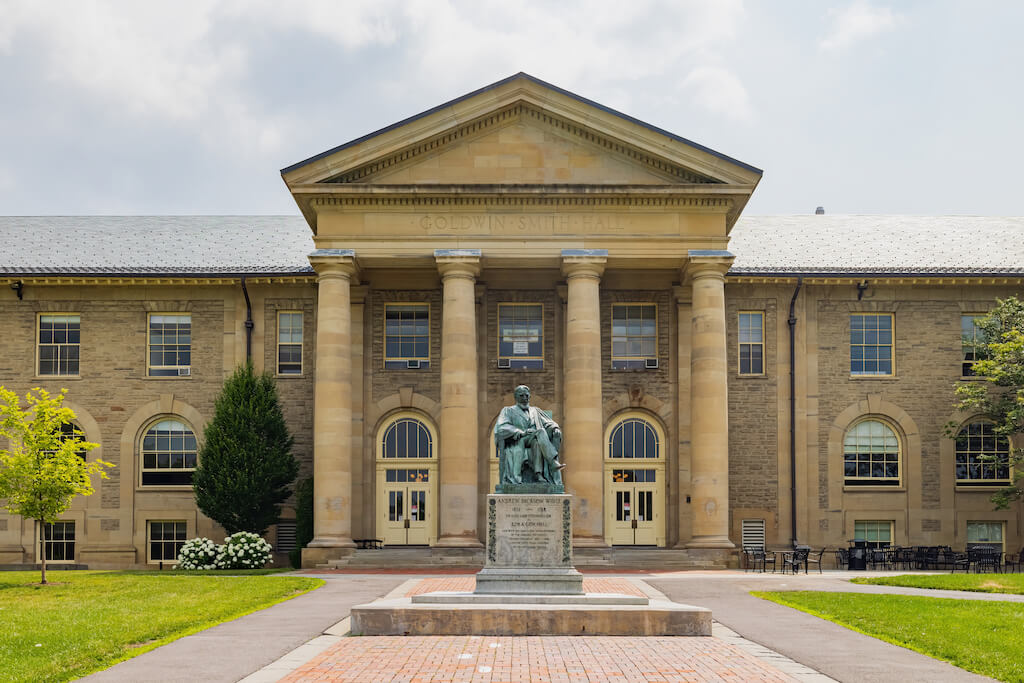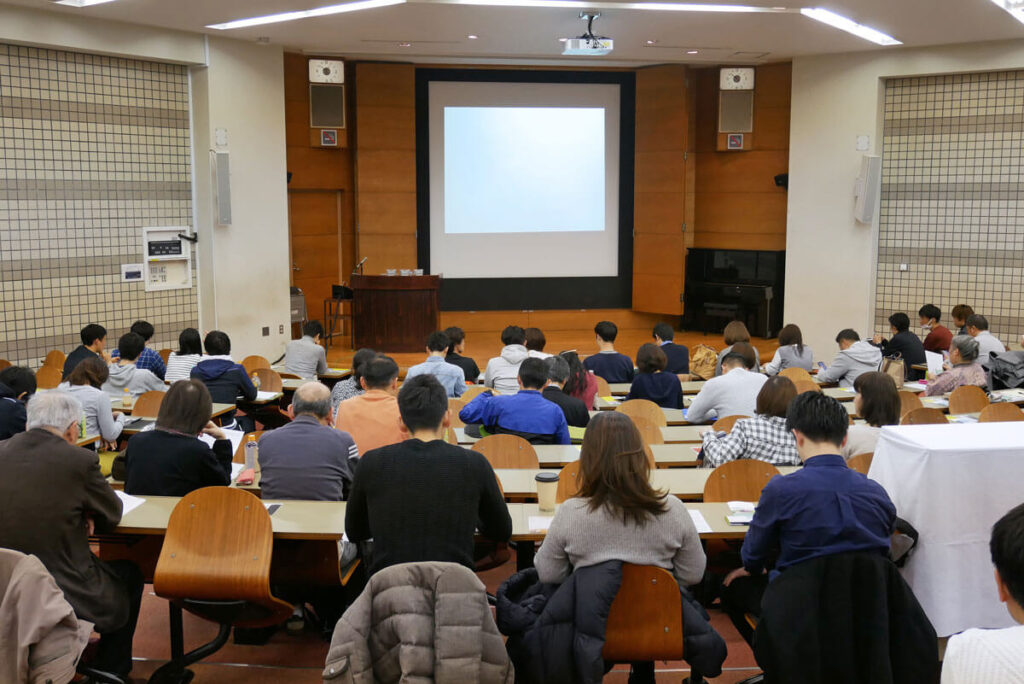I heard about the American College & University Presidents’ Climate Commitment (ACUPCC) shortly after it was initiated. The concept was that many politicians, business leaders, and citizens in the United States continued to ignore the signs of global warming. A group of college presidents signed a commitment to develop a plan for their institutions to achieve carbon neutrality as soon as possible by creating a workable plan, completing a comprehensive inventory of all greenhouse gas emissions, initiating tangible actions to reduce greenhouse gas emissions, and making all plans publicly available.
I signed the commitment on behalf of American Public University System (APUS) in September 2007. APUS was one of several hundred colleges and universities that were charter signatories. I wrote about it in this blog article from June 2008.
At the time I wrote my blog article, APUS had never constructed a new building. All of our classes were online, but we needed office space for our academic and administrative leadership as well as a number of departments serving our students and faculty at a distance.
We had purchased and rehabbed a number of small buildings and homes in the downtown Charles Town, West Virginia community, beginning with our 10,500-square-foot (s.f.) headquarters on West Congress Street in 2002. I wrote a blog article in 2015 about a number of our property renovations.
Shortly after the signing, we acquired a former ACME grocery store in town. Our renovations were planned by our architect to comply with the Green Building standards specified in the ACUPCC. The building was purchased with the intention of consolidating several groups of information technology employees into a single location.
When a local developer approached us about renting a floor or two in a 44,000 s.f. downtown office building that he planned to build, my CFO and I offered to buy the entire building if he built it in accordance with the Green Building standards. The site for the proposed building was on a Brownfields site that had been remediated through an Environmental Protection Agency (EPA) grant.
We were able to work with his architect to change some of the plans and ended up moving into our new Academic Center in 2010. That building was later awarded the LEEDS Gold designation.

Surrounding the new building were three former Maytag warehouses and assembly sites, owned by a Real Estate Investment Trust (REIT). When the REIT donated one of the warehouses to the neighboring city of Ranson, we asked if it would consider selling the other two sites to APUS. All of those properties were on the former Brownfields site.
We knew that operating many small buildings was not energy-efficient. Our ACUPCC-required inventory of greenhouse emissions made it clear how inefficient those buildings were to operate. With the purchase and construction of our new Academic Center, we were able to consolidate employees who were located in several smaller buildings that we leased.
Shortly after our academic leadership and staff moved into the new Academic Center, we began planning for the demolition of one of the warehouses next door with plans to construct a 105,000 s.f. building to house our finance, financial aid, and admissions departments with room for the addition of other departments.
Part of the warehouse site included parking. During a trip to the University of Lisbon, I saw a number of open parking lots that included solar panels over the parking spaces. I asked our facilities team to investigate the possibility of incorporating solar panels into the development of our Finance Center parking.

In 2012, we constructed the largest privately-funded solar array in the state of West Virginia, incorporating more than 1,600 solar panels. We included charging stations designated for electric and hybrid vehicles, including vehicles owned by local citizens.
When the Finance Center opened in 2013, we were able to achieve LEEDS Platinum designation, thanks to the inclusion of the parking lot solar array. Later that same year, we were awarded an environmental excellence award from the West Virginia Department of Environmental Protection for the construction of the two buildings and the solar array on a former Brownfields site. At the same time, our growth in students enrolled had continued to increase from the 31,000 enrolled when I wrote my 2008 blog article to more than 100,000.
We demolished the last warehouse on the Brownfields property and began construction on a new building to house our IT staff. It would also include an observatory for the utilization of students enrolled in our Space Studies programs. That building opened in 2015, and the plan was to achieve LEEDS Silver designation. Concerned that we might run out of future space for expansion, we purchased an abandoned fertilizer plant across the street from our Academic Center that same year, remediated the property, planted grass, and maintain it today as a pre-zoned, two-acre downtown site.

The last annual emissions report submitted by APUS for the ACUPCC covered calendar year 2016. While the overall greenhouse emissions increased from the baseline in 2007, the emissions per full time student enrollment decreased by 36 percent, on track for the 50 percent reduction by 2025.
The COVID-19 pandemic triggered social distancing orders from West Virginia’s governor in March of 2020. On March 16, APUS asked its staff to work remotely from home. With no one working from the Charles Town campus buildings, the emissions decreased. With no one traveling to conferences, the emissions from flight transportation decreased as well.
Even though I retired in August 2020, I suspect that the massive working from home experience will change the office needs for many companies, not just APUS. With the increased number of people in the U.S. who have received vaccinations, the number of cars on the road has risen as well, increasing carbon emissions.
There is no excuse for ignorance of the science or data, particularly for an institution of higher learning. I am glad that I signed the ACUPCC in 2007. Having the initial inventory of emissions as well as the periodic measurements through 2016 provides the leadership team with a tool for measuring progress.
When you consider the fact that hundreds, if not more than a thousand, colleges and universities have signed the commitment and continue to measure their progress towards carbon neutrality, it’s a solid opportunity for many of our nation’s corporations to benchmark against. Let’s hope we can swing the trendline toward reducing emissions everywhere before it’s too late.











